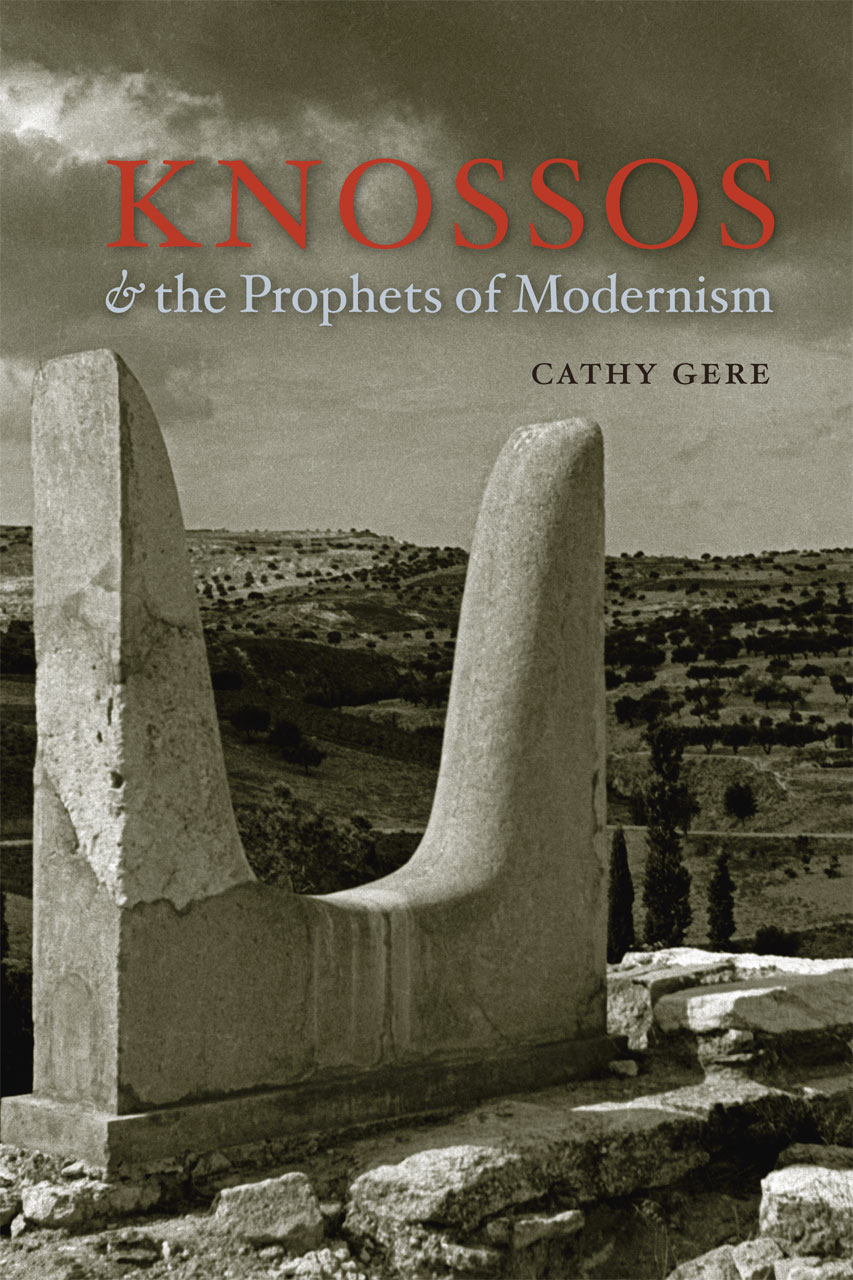Cathy Gere: Knossos and the Prophets of Modernism (2009)
Filed under book | Tags: · antiquity, archaeology, art, femininity, literature, modernism, philosophy, psychoanalysis, racism

“In the spring of 1900, British archaeologist Arthur Evans began to excavate the palace of Knossos on Crete, bringing ancient Greek legends to life just as a new century dawned amid far-reaching questions about human history, art, and culture. With Knossos and the Prophets of Modernism, Cathy Gere relates the fascinating story of Evans’s excavation and its long-term effects on Western culture. After the World War I left the Enlightenment dream in tatters, the lost paradise that Evans offered in the concrete labyrinth—pacifist and matriarchal, pagan and cosmic—seemed to offer a new way forward for writers, artists, and thinkers such as Sigmund Freud, James Joyce, Giorgio de Chirico, Robert Graves, and Hilda Doolittle.
Assembling a brilliant, talented, and eccentric cast at a moment of tremendous intellectual vitality and wrenching change, Cathy Gere paints a portrait of the age of concrete and the birth of modernism.”
Publisher University Of Chicago Press, 2009
ISBN 0226289532, 9780226289533
277 pages
Reviews: Nicoletta Momigliano (Bryn Mawr Classical Review, 2009), Mary Beard (The New York Review of Books, 2009), Nanno Marinatos (American Journal of Archaeology, 2010), Marnin Young (NonSite, 2011).
Comment (0)L. D. Reynolds, N. G. Wilson: Scribes and Scholars: A Guide to the Transmission of Greek and Latin Literature (1968/1991)
Filed under book | Tags: · antiquity, book, history, history of literature, literature, middle ages, print, publishing, renaissance, scholarship, textual criticism, transmission of texts, writing

“One of the remarkable facts about the history of Western culture is that we are still in a position to read large amounts of the literature produced in classical Greece and Rome despite the fact that for at least a millennium and a half all copies had to be produced by hand and were subject to the hazards of fire, flood, and war. This book explains how the texts survived and gives an account of the reasons why it was thought worthwhile to spend the necessary effort to preserve them for future generations.
In the second edition a section of notes was included, and a new chapter was added to deal with some aspects of scholarship since the Renaissance. In the third edition, the authors responded to the urgent need to take account of the very large number of discoveries in this rapidly advancing field of knowledge by substantially revising or enlarging certain sections.”
Publisher Clarendon Press, Oxford, 1968
Third edition, 1991
ISBN 0198721463, 9780198721468
352 pages
Review (of 2nd ed., E. Christian Kopff, The Classical Journal, 1976)
Review (M. Possanza, Bryn Mawr Classical Review, 1991)
PDF (12 MB)
Comment (0)Maurice Blanchot: The Book to Come (1959‒) [EN, PT]
Filed under book | Tags: · book, literary theory, literature, philosophy, writing

“During the last half of the twentieth century in France, Maurice Blanchot was a key figure in exploring the relation between literature and philosophy. He developed early on a distinctive, limpid form of essay writing, and his essays, in form and substance, left their unmistakable imprint on the work of the most distinguished French theorists. The writings of Barthes, Foucault, and Derrida, for example, are hardly imaginable without Blanchot.
The Book to Come gathers together essays originally published in La Nouvelle Revue Française. Not a random collection of essays, this book is organized into four sections: “the secret of literature”; literature as exigence and as meaning; literature and the novel; and the future of writing and of the book. The authors discussed constitute a veritable repertoire: Rousseau, Proust, Artaud, Brach, Musil, James, Beckett, Bataille, Mallarmé, Joubert, and Claudel, among others.”
Originally published as Le livre à venir, Gallimard, Paris, 1959
English edition
Translated by Charlotte Mandell
Publisher Stanford University Press, 2002
Meridian: Crossing Aesthetics series
ISBN 0804742235
267 pages
Review (Mark Cohen, 2004)
The Book to Come (English, trans. Charlotte Mandell, 2002, 15 MB)
O livro por vir (Portuguese, trans. Leyla Perrone-Moises, 2005, 7 MB)

